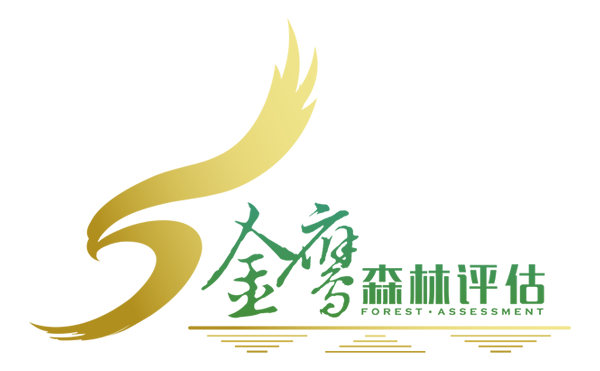发布:2025-10-14 浏览:0
一森林资源评估的基本概念
Basic concepts of forest resource assessment
森林资源评估是指对林地及其所生长的森林有机体(包括林木资源、林中和林下植物、野生动物、土壤微生物及其他自然环境因子等资源)的价值进行评定和估算的过程。评估结果可以为森林资源的合理利用、保护和管理提供科学依据。
Forest resource assessment refers to the process of evaluating and estimating the value of forest land and its growing forest organisms (including forest resources, in forest and understory plants, wildlife, soil microorganisms, and other natural environmental factors). The evaluation results can provide scientific basis for the rational utilization, protection, and management of forest resources.
二森林资源评估的对象
Object of Forest Resource Assessment
森林资源评估的对象主要包括林木资产、林地资产、景观资产以及野生动植物资产等。其中,林木资产占比较高,且可以派生出其他森林资源资产,因此通常以林木资产的价值测算来确定森林资源的整体价值。
The objects of forest resource assessment mainly include forest assets, forest land assets, landscape assets, and wild animal and plant assets. Among them, forest assets account for a relatively high proportion and can derive other forest resource assets, so the overall value of forest resources is usually determined by measuring the value of forest assets.
三森林资源评估收集的资料
Data collected for forest resource assessment
(一)森林资源资产清单森林资源资产清单,应依据森林资源调查成果(森林资源规划设计调查、作业设计调查或为评估进行的专项调查)或森林资源档案等资料编制,最小单位应落实到小班。评估有效期内采伐的森林资源资产清单应依据采伐作业设计调查成果编制。因条件所限,未能取得依据采伐作业设计调查成果编制的森林资源资产清单,应说明原因及对评估结果所产生的影响。古树名木、零星分布的高价值珍贵树木、森林景观、林下动植物资源等森林资源资产,应根据专业调查资料编制资产清单。
(1) The list of forest resource assets should be compiled based on the results of forest resource surveys (such as forest resource planning and design surveys, operational design surveys, or special surveys conducted for evaluation) or forest resource archives, and the smallest unit should be implemented in small groups. The list of forest resource assets harvested during the evaluation period should be compiled based on the survey results of the logging operation design. Due to limitations in conditions, it was not possible to obtain a forest resource asset inventory based on the survey results of the logging operation design. The reasons and their impact on the evaluation results should be explained. Forest resource assets such as ancient and famous trees, scattered high-value precious trees, forest landscapes, and understory flora and fauna resources should be listed based on professional survey data.
(二)其他相关资料其他相关资料主要包括:1、林权证书(或相关权属证明文件)、有关森林经营权的合同、协议书等;2、评估范围内的森林资源图面资料;3、有特殊经济价值的林木种类、数量和质量材料;4、林木资源资产分经营类型分龄段的面积、蓄积统计;5、评估对象基本图、林相图、作业设计调查图;6、各小班立地条件等级和地利等级调查资料;7、涉讼事项及抵押、担保事宜情况说明及有关资料;8、按照评估目的必须提交的其他相关材料。
(2) Other related materials mainly include: 1. Forest ownership certificate (or relevant ownership proof documents), contracts, agreements related to forest management rights, etc; 2. Forest resource map data within the evaluation scope; 3. Types, quantities, and quality materials of trees with special economic value; 4. Statistics on the area and volume of forest resource assets by management type and age group; 5. Basic map of evaluation object, forest phase map, and survey map of homework design; 6. Survey data on the site condition level and geographical advantage level of each small class; 7. Explanation and relevant information on litigation matters, mortgage and guarantee matters; 8. Other relevant materials that must be submitted according to the evaluation purpose.
(三)收集评估资料评估机构收集的评估资料应包括以下内容:1、营林生产技术标准及有关成本费用资料;2、木材生产、销售等有关成本费用资料;3、当地森林培育、森林采伐和基本建设等方面的技术经济指标;4、森林培育的账面历史成本资料;5、评估基准日各种规格的木材、林副产品市场价格,及其销售过程中的税、费征收标准;6、当地及周边地区的林地使用权出让、转让和出租的价格资料;7、当地及周边地区的林业生产投资收益率;8、各树种的生长过程表、生长模型、收获预测等资料;9、使用的立木材积表、原木材积表、材种出材率表、立地指数表等测树经营数表资料;10、其他与评估有关的资料。
(3) The evaluation data collected by the evaluation agency should include the following contents: 1. Technical standards for forest production and relevant cost and expense information; 2. Cost and expense information related to wood production and sales; 3. Technical and economic indicators related to local forest cultivation, forest logging, and infrastructure construction; 4. Historical cost data of forest cultivation on paper; 5. Evaluate the market prices of various specifications of timber and forest by-products on the benchmark date, as well as the tax and fee collection standards during the sales process; 6. Price information for the transfer, assignment, and rental of forest land use rights in the local and surrounding areas; 7. The return on investment of forestry production in the local and surrounding areas; 8. Data on the growth process table, growth model, and harvest prediction of various tree species; 9. The data from tree management tables such as standing timber volume table, log timber volume table, timber yield table, site index table, etc. used; 10. Other materials related to evaluation.
四森林资源评估的步骤
The Steps of Forest Resource Assessment
(一)明确评估业务基本事项:确定评估的具体目标和要求,如为森林资源转让、抵押贷款、保险理赔等提供价值依据。
(1) Clarify the basic items of the evaluation business: Determine the specific objectives and requirements of the evaluation, such as providing value basis for forest resource transfer, mortgage loans, insurance claims, etc.
(二)签订业务约定书、编制评估计划:就评估目的、评估对象和评估范围、价值类型、评估基准日、资产评估报告使用范围、资产评估报告提交期限及方式、评估服务费及支付方式、评估工作各方参与人工作配合和协助等资产评估业务基本事项达成一致,签订资产评估委托合同,拟定评估计划。
(2) Sign a business agreement and prepare an evaluation plan: reach an agreement on the basic matters of asset evaluation business, such as evaluation purpose, evaluation object and scope, value type, evaluation benchmark date, scope of use of asset evaluation report, submission deadline and method of asset evaluation report, evaluation service fee and payment method, cooperation and assistance of all parties involved in the evaluation work, sign an asset evaluation commission contract, and formulate an evaluation plan.
(三)收集评估资料:包括林权证书、不动产权证、森林资源图面资料、有特殊经济价值的林木种类、数量和质量材料等。
(3) Collect and evaluate data, including forest ownership certificates, real estate ownership certificates, forest resource maps, and materials on the types, quantities, and quality of trees with special economic value.
(四)现场调查核实:采用抽样调查法、小班调绘法、实测法等方法对森林资源进行现场调查核实,确保评估结果的准确性和可靠性。
(4) On site investigation and verification: Sampling survey method, small group mapping method, actual measurement method and other methods are used to conduct on-site investigation and verification of forest resources to ensure the accuracy and reliability of the evaluation results.
(五)评定估算:根据评估对象的特点和评估目的选择合适的评估方法。根据选定的评估方法,对收集到的数据进行计算和分析,得出评估结果。
(5) Evaluation estimation: Select an appropriate evaluation method based on the characteristics of the evaluation object and the evaluation purpose. According to the selected evaluation method, calculate and analyze the collected data to obtain the evaluation results.
(六)编制和提交评估报告:将评估结果以报告的形式呈现出来,包括评估对象、评估方法、评估过程、评估结果等内容。
(6) Preparation and submission of evaluation report: Present the evaluation results in the form of a report, including the evaluation object, evaluation method, evaluation process, evaluation results, etc.
(七)工作底稿归档:对工作底稿、资产评估报告及其他相关资料进行整理,形成资产评估档案。
(7) Archiving of working papers: Organize working papers, asset appraisal reports, and other related materials to form asset appraisal archives.
五森林资源评估的方法
Five methods for forest resource assessment
森林资源评估的方法多种多样,主要包括以下几种:
There are various methods for forest resource assessment, mainly including the following:
(一)成本法:主要用于人工林的幼龄期价值评估。该方法按现时的公价及生产水平重新营造一块与被评估森林资源资产相类似的森林资源资产所需的成本费用,作为被评估森林资源资产的评估值。这种方法充分考虑了现实条件以及林木实际生长情况,但计算过程较为复杂且工作量较大。其计算公式为:
(1) Cost method: mainly used for evaluating the value of young artificial forests. The cost of creating a forest resource asset similar to the evaluated forest resource asset based on the current public price and production level is used as the evaluation value of the evaluated forest resource asset. This method fully considers the actual conditions and growth of trees, but the calculation process is complex and the workload is large. The calculation formula is:
式中:E 一评估值K 一林分质量综合调整系数,综合调整系数的确定见附录Ci 一第 i 年的以现时工价及生产水平为标准的生产成本n-林分年龄P —投资收益率
In the formula, E represents the evaluation value, K represents the comprehensive adjustment coefficient of forest stand quality. The determination of the comprehensive adjustment coefficient can be found in Appendix Ci, which includes the production cost n based on current labor prices and production levels in the i-th year, the forest stand age P, and the investment return rate
(二)市场价倒算法:通过计算林木采伐销售总收入,并减去与林木相关的采伐、销售成本及利润费用,得出剩余收入,并以此确认为林木现实价值。这种方法较为简单直接,但需要详细的市场调查和准确的成本估算。其计算公式为:
(2) Market price inversion algorithm: By calculating the total revenue of forest harvesting and sales, and subtracting the harvesting, sales costs, and profit expenses related to the forest, the remaining revenue is obtained and recognized as the actual value of the forest. This method is relatively simple and direct, but requires detailed market research and accurate cost estimation. The calculation formula is:
式中:E 一评估值W 一木材销售总收入C 一木材生产经营成本F 一木材生产经营利润
In the formula: E - evaluation value W - total sales revenue of wood C - production and operation cost of wood F - production and operation profit of wood
(三)收益现值法:通过估算被评估森林资源资产在未来经营期内各年的预期净收益,再按照一定的折现率折算为现值,并累计求和得出被评估森林资源资产评估值。这种方法适用于中龄期及近熟期的林木,不适用于幼龄期林木。其计算公式为:
(3) Present value of income method: By estimating the expected net income of the evaluated forest resource asset over the future operating period, converting it to present value at a certain discount rate, and cumulatively summing it up, the evaluated value of the evaluated forest resource asset is obtained. This method is suitable for middle-aged and near mature trees, but not for young trees. The calculation formula is:
式中:E 一评估值Ai 一第 i 年的年净收益u 一经营周期P —投资收益率n?-林分年龄此外,还有市场成交价比较法、收获现值法、年金资本化法、周期收益资本化法等多种方法,这些方法的选择应根据评估方法的适用条件、评估对象、评估目的进行综合考虑。
In the formula, E represents the evaluation value, Ai represents the annual net income in the i-th year, u represents the operating cycle, P represents the investment return rate, n represents the age of the forest stand. In addition, there are various methods such as market transaction price comparison, present value of harvest, annuity capitalization, and periodic income capitalization. The selection of these methods should be comprehensively considered based on the applicable conditions, evaluation objects, and evaluation purposes of the evaluation methods.
六森林资源评估的意义
The Significance of Forest Resource Assessment
森林资源评估对于森林资源的合理利用、保护和管理具有重要意义。通过评估,可以了解森林资源的数量、质量和分布情况,为制定科学合理的森林资源管理政策提供依据。同时,评估结果还可以为森林资源转让、抵押贷款等经济活动提供价值参考,促进森林资源的优化配置和可持续发展。综上所述,森林资源评估是一个复杂而细致的过程,需要综合运用多种方法和手段进行评定和估算。通过评估,可以为森林资源的合理利用、保护和管理提供科学依据和决策支持。
Forest resource assessment is of great significance for the rational utilization, protection, and management of forest resources. Through evaluation, the quantity, quality, and distribution of forest resources can be understood, providing a basis for formulating scientific and reasonable forest resource management policies. Meanwhile, the evaluation results can also provide valuable references for economic activities such as forest resource transfer and mortgage loans, promoting the optimal allocation and sustainable development of forest resources. In summary, forest resource assessment is a complex and meticulous process that requires the comprehensive use of multiple methods and tools for evaluation and estimation. Through evaluation, scientific basis and decision support can be provided for the rational utilization, protection, and management of forest resources.
本文由 森林资源资产评估 友情奉献.更多有关的知识请点击 http://www.jyslpg.com/ 真诚的态度.为您提供为全面的服务.更多有关的知识我们将会陆续向大家奉献.敬请期待.
This article is contributed by the Friendship Contribution of Forest Resource Asset Evaluation For more related knowledge, please click http://www.jyslpg.com/ Sincere attitude To provide you with comprehensive services We will gradually contribute more relevant knowledge to everyone Coming soon.





















